|
In our work and efforts to promote diversity, equity, and inclusion (DEI), we often unconsciously centre the 'Global North'. This not only limits our perspectives but also risks imposing colonial practices and alienating those we are trying to include.
At HTVB we work with clients all over the world and wanted to share some lessons to help you get this approach right. Here are six ways we can start to decenter the 'Global North' in our DEI work. Before we do this, just a note on language... The term 'global north' is problematic and simplistic, but it's used here to highlight the need to de-center traditionally dominant perspectives. Whilst this term is often used instead of ‘the West’ or ‘Developed Countries’, it still reinforces a binary view of the world that can overlook the complexities and nuances within these regions. Additionally, it perpetuates a hierarchy that often positions the 'global north' as superior to the 'global south,' reinforcing outdated colonial and imperialist dynamics. 1) Diversify your sources It's easy to fall into the trap of using research and data that only reflects the context of the US, UK, and Europe. However, this approach can lead to a skewed perspective that isn't globally applicable. It can also come across as lazy. Instead it’s important to be specific, or where necessary (which it almost always is!) consider diversifying your sources. Utilise academic texts from the Global South, especially if data and research are lacking in the countries you are working in. 2) Be mindful of reinforcing colonial practices In our global approaches to DEI, we may inadvertently reinforce and impose colonial practices unless we are consciously avoiding it. For instance, global strategies directed from a headquarters in the Global North may fail to meet people in their local context. Also, consider the dynamics of using facilitators and trainers from the Global North to deliver learning and development globally. This approach can unintentionally create power imbalances and perpetuate colonial dynamics or connotations. 3) Language matters Language is a powerful tool that can either include or exclude people. Ensure DEI work is adequately translated by experts rather than relying on automated translations or expecting audiences to translate for themselves. This not only respects the linguistic diversity of your audience but also ensures that your message is accurately and effectively communicated. Even where English (for example) is widely spoken, it can be an inclusive gesture to still use translations in order to reduce the load placed on cognitive resources which is additional labour folks have to carry in order to do their work. 4) Be conscious of colonialism as well as ‘Cultural Competency’ While cultural competency is often promoted through training, it should not be promoted without providing education about the enduring impact of colonialism. By acknowledging its impact, we can develop a more nuanced understanding of DEI and work towards more equitable practices. Colonialism has shaped the world and local contexts in significant ways, creating power dynamics that can override any notion of ‘culture’ within teams and environments. 5) Build partnerships Building country or regional-specific partnerships is another effective way to de-center the Global North in DEI work. Domestic partners will have a much deep understanding of DEI topics in their location, including the nuances, political contexts and power dynamics. Even if they don't use the terms DEI to describe what they do, their insights and expertise are likely to be more valuable. Especially when it comes to the delivery of events and learning, domestic partners can provide valuable context and relevance. Plus, choosing domestic providers and businesses is a more inclusive approach to engaging with your supply chains! 6) Rethink your definition of representation Representation is a key aspect of DEI. However, it's important to think of representation on a global scale. How can a global organisation truly understand its audience if it does not strive to represent them? What I mean by representation is having people in positions of power and influence that can make decisions that impact people who share their characteristics and perspectives. Centering intersectionality globally means that it's not enough for your leadership teams to just represent a Global North HQ. Consider your workforce, customer base, and supply chain that are worldwide.
0 Comments
The ethical concerns associated with AI been widely discussed, as well as the lack of diversity within teams working on AI and the corresponding data sets used to train tools. However, I am yet to see DEI leaders discuss the implications of using AI in our work - which we know is happening - even if people are not admitting it!
Be honest if you are working in DEI and are utilising AI in your day-to-day work. AI, specifically generative AI, is now part of our world in ways we probably did not imagine it would be. In this blog post, I am sharing some thoughts, based on what I have noticed, on what I see as the Do's and Dont's for DEI leaders when it comes to using generative AI to support our work. Generative AI, has the ability to transform the way we communicate and potentially even enhance the inclusivity of our communication. By leveraging AI, DEI leaders can ensure that their messages are tailored to their audience and are delivered in a way that is easily understood. Just like any tool, it must be used thoughtfully, taking into account its constraints and possible drawbacks. Do:
Don't:
Author - Hayley Bennett, Director of HTVB. In this post, I am sharing some key elements of a successful DEI strategy. When it comes to DEI strategy developments, you need to think about these key elements that are often overlooked. Read along as we play a little game of bingo to determine whether your DEI strategy is indeed a strategy or just a list of good intentions. If you are developing a strategy, ask yourself these questions to ensure it is effective. If you are not happy with your answers, get in touch with me and we can support! 1) Does it state how the actions will be carried out as well as what the actions are? A DEI strategy is more than just a list of intentions. It should be a comprehensive plan for progress, outlining not just what the actions will be, but also how they will be carried out. So, ask yourself, does your DEI strategy detail the how and what of your actions? 2) Are there outcomes that can be measured, as well as KPIs? A key part of any strategy is the ability to track progress and measure success. Does your DEI strategy have measurable outcomes and Key Performance Indicators (KPIs)? This is vital in evaluating whether your DEI strategy is making a tangible difference within your organization. 3) Is it aligned to your organisation’s goals, mission, purpose and values? Your DEI strategy should be an integral part of your business planning, aligning with its goals, mission, purpose, and values. Can you confidently say that your DEI strategy aligns with your organisation's key objectives and is seen as something that can help your organisation achieve its business goals? 4) Can the majority of the workforce tell you the key focus areas? The success of a DEI strategy largely depends on employee engagement and awareness. Would the majority of your workforce be able to tell you the key focus areas of your DEI strategy at the very least? 5) Does it have a well-defined focus with SMART-objectives? A well-defined focus, along with SMART (Specific, Measurable, Achievable, Relevant, Time-bound) objectives, forms the backbone of a successful strategy. 6) Is there a governance structure and a strategic task-force / working group that meets regularly? To ensure the implementation and effectiveness of your DEI strategy, you need a governance structure in place and a strategic task force or working group that meets regularly. Otherwise your strategy will remain just a document. 7) Is there accountability for progress through a consistent monitoring and evaluation process? Accountability is crucial for the success of any strategy. Within your strategy, you should ensure that responsibilities are clearly defined and that all those responsible are aware of their roles and expectations. By upholding accountability at all levels, a strategy is more likely to be executed efficiently and goals are more likely to be achieved. 8) Has the ExCo only looked at it once or twice, or do they periodically discuss it? The commitment of the executive team is often a determinant of a strategy's success. It is essential that the leadership not only reviews the strategy once or twice but also prioritizes it by regularly discussing it during their meetings. 9) Is there a communications plan to bring it to life both internally and externally? Having a comprehensive communications plan is essential for bringing your strategy to life. Internally, effective communication ensures that all team members are aware of the goals and initiatives outlined in the strategy. Incorporating communication strategies such as town hall meetings, newsletters, social media campaigns, and diversity reports can help build traction and keep the workforce informed and engaged. Externally, an aligned communications plan should help create credibility and visibility for your organization's strategic direction to stakeholders, customers, and the public through things like press releases, social media updates, website announcements, and industry events. 10) Can it be used to track progress on an ongoing basis? A strategy needs to be regularly monitored and tracked so that you can hold yourself accountable for progress. A robust tracking and monitoring tool should be developed at the same time as the strategy. This seems obvious but so many strategies miss this key part as people perceive the creation of the strategy itself as the goal, rather than a means to achieve wider goals. 11) Does the strategy have clear expectations for the entire workforce, broken down by departments and individuals? The strategy needs to establish clear expectations for the entire workforce, outlining roles for both departments and individuals, to ensure everyone comprehends their part in the DEI strategy. This is where I see most strategies fail. Whilst there are key players who are responsible, accountable, consulted and informed, everyone has a role to play. Does your strategy convey this? 12) Is it just a static document or is it flexible with planned reviews? Regular reviews and assessments are necessary to ensure that the DEI strategy remains relevant. By actively seeking feedback, staying informed on best practices, and being willing to make adjustments, organizations can create a DEI strategy that is not only robust but also responsive to the ever-changing landscape of diversity, equity, and inclusion. Can we help you develop a more effective DEI strategy and save you time and money? Get in touch today! Hayley BennettHTVB Founder, DEI Consultant On 1st March 2024, I was invited to give a talk at the Tackling Racism in Sport Conference hosted by UK Sport and the Home Nations Sports Councils. I have been blown away by the feedback. I am all about action rather than talk, but one of the reasons I see for the inaction is that we haven’t moved on from how we talk about race and racism in sport in ways that is not always conducive to progress. These have become normalised as part of the discourse. So much of what we say indicates our mindset or lack of capability to lead and problem solve on anti-racism. How can we acknowledge this and move forward? I hope we can recognise some of the common but unhelpful phrases used during conversations about tackling racism in sport such as those outlined in this blog. Let’s move on from these unhelpful takes about racism in sport:
They prevent us from progressing anti-racism work because:
1. Those impacted cannot ‘’rise above’ racism, nor should they be expected to. We need to centre the wellbeing impact of racism on people involved in sport, especially athletes. Defaulting to topics we are more comfortable to talk about, such as social class, is a way to avoid the reality of racism in sport or shift the focus away from anti-racism. 2. Thinking that it is supportive to be surprised at things that those with lived experiences live with daily can show a lack of awareness. It is not surprising, but scandalous. 3. Intersectionality is a thing! Making false equivalences or compare racism issues to other forms of discrimination often result in further exclusion and a race to the bottom for all marginalised communities. 4. Using systemic racism in society as an excuse for inaction shows a lack of responsibility from sport to tackle racial inequality and the way it specifically manifests in its context and culture. 5. When we equate diversity and inclusion work with anti-racism work, it diminishes our ability to reimagine a sporting world that is truly anti-racist rather than just including racial diversity in a broken system.. This isn’t about avoiding ‘saying the wrong thing’ but avoiding downplaying the impact of racism in sport or reinforcing inequalities in the language we use. Let’s move the conversation along so we can set our sights on meaningful progress and move anti-racism work along too! *POV: You have just been asked, or maybe you have even volunteered yourself, to start doing extra work which involves DEI within your organization.* Me and my friend Ash Ahmad regularly find ourselves supporting folks in this position. So last week when we met up, we found ourselves discussing the advice we share... and this post was born! There is often a disconnect between your own motivations or expectations, with the reality of doing this work - especially if your organization is just getting started! So here are our 10 questions to ask yourself before taking on extra DEI work for your organisation - whether this is paid, 'voluntary', as an ERG lead or otherwise...
If you have been in this position, what other questions did you ask yourself... or wish you asked yourself? Co-created with Ash Ahmad!
This post is about more than just inclusive leadership, it is about showing genuine commitment as well as having the skills to lead inclusively. On LinkedIn I shared that having a CEO and exec team member who "gets it" is a pre-requisite for any meaningful DEI work. In this work there are few things that feel worse than having a Senior Leader who appears to be consciously committed to diversity, equity and inclusion letting you down... The five most common ways Senior Leaders have disappointed me are: 1) Ducking out of DEI meetings/events early once you've given an introduction (or staying but being on emails the whole time) 2) Not doing enough to recognise, reward and support colleagues working in DEI (whether full time or as part of an ERG) 3) just Asking to be 'kept in the loop' but never following up or being proactive about DEI work taking place 4) Not being able to speak candidly and openly about DEI without having a script written by someone else 5) Not walking the talk when it comes to your own recruitment practices... So how can Senior Leaders really show up how and when it matters to play their role in DEI? This infographic contains some of my advice based on experience of working with Senior Leaders who really demonstrated their passion and dedication through their behaviours. 1) Proactively give support acknowledgement and recognition to DEI colleagues. Prioritise the wellbeing and psychological safety of DEI managers and ERG leads.
2) Make time for DEI and be fully present during meetings and events - don’t duck out early or multi-task 3) Get 360 feedback on your inclusive leadership qualities... and take the feedback on board 4) Don't just wait for updates - see it as your responsibility to stay informed and get involved in DEI work 5) Hold yourself accountable through having DEI objectives, goals and development areas 6) Connect with other leaders to talk and act on DEI work in your industry and community 7) Invest in specific coaching for DEI and go beyond just relying on free advice and mentoring 8) Ensure you are role modelling best practice equitable and inclusive hiring practices. Hold others accountable for this too! Above all, be consistent, proactive and conscious in your approach. Even when you think you are passionate and doing enough, there is always more you should be doing! I don’t think we talk about this enough, and I definitely don’t think there is enough support out there for people working in DEI roles.
Whether you’re a consultant like me, work within an organisation’s DEI function, or have a remit for advancing equity, diversity and inclusion as part of your role (even voluntarily as part of an ERG/network), there are occupational hazards that come with these responsibilities. Check out the infographic below and join the conversation over on LinkedIn where this was viewed over 250k times! Meaningfully celebrating Black History Month: tips for organisations and brands to get it right23/9/2021 Now more than ever it is important for organisations to meaningfully commemorate Black History Month. Although Black History Month is a time of year we look forward to, in a personal and professional capacity it can be frustrating and demoralising to see organisations produce initiatives that are rushed, tokenistic and sometimes offensive.
We are two sisters who are inundated with requests for the month of October and again wanted to share some advice and suggestions for how to properly commemorate Black History Month this year. Melissa (@HistorianMel) is a historian and community engagement professional and Hayley (@HayleyTVB) is an independent equity, diversity and inclusion consultant, speaker and campaigner. If you are an organisation or brand, and thinking of organising an event or creating some related content. Check out our 15 tips below: 1. Allocate budget and pay speakers and contributors You may have gathered this from our introduction, but just in case DO NOT ask Black speakers to speak at your event or produce content for you for free. This is insulting and very problematic considering how much free labour Black men and women are already doing due in terms of both emotional labour and pay inequity. This also includes approaching people to advise you on your event programme, outward facing comms etc. You would not expect any other expert or consultant to come into your organisation and share their knowledge for free. 2. It’s Black History Month not BAME History Month Black History month was established more than 30 years ago to celebrate and acknowledge Black history. It is not appropriate to conflate other minority ethnic histories with Black History Month and this could be a costly mistake in terms of PR and credibility. There are other history months set aside to recognise other groups e.g. South Asian History Month and Gypsy, Roma and Traveller History Month and you should be acknowledging these as well. The first East and South East Asian History Month took place this year. 3. Challenge ‘whataboutery’ The focus on Black people during October always makes others uncomfortable and can lead to people questioning why attention apparently isn’t given to other groups. This is an expression of anti-Blackness and should be challenged. It is important to understand the origins of Black history month to be able to articulate why it is needed, and how Black people have led the way in campaigning for recognition and civil rights that others have benefited from. Do not be afraid of being pulled into debates about ‘political correctness’, ‘culture wars’ or ‘rewriting history’ but be prepared for some people not to appreciate your work and have support for staff and a comms approach planned in case this happens. 4. Recognise Black contributions that have paved the way Properly recognise the contributions of Black people to your company. If historically these contributions have been limited, branch out to the contributions of Black people to your sector more broadly. Highlight Black innovators and achievers who paved the way in your field regardless of where they worked. If you have not had the best history when it comes to inclusion, be prepared for Black colleagues to question the story you are telling in outward and inward facing campaigns, give them opportunities to share their concerns and provide them with evidence of real measurable intentions to change. 5. Explore Black History beyond slavery Make sure you acknowledge the variety of Black history without over emphasis on enslavement. There are lots of other significant events to commemorate and learn more about. However, you can be honest about the various legacies that have led the world to be the unequal place that it is. Always ensure that Black histories are told from Black perspectives not white perspectives. This means that you may need to double check who authored some of the resources that you might cite or quotes that you might highlight. Avoid 'first Black person to' clichés and narratives as these are often proved to be incorrect later down the line. 6. There’s more than the US Black experience Make sure that you do your research and connect to Black History that is relevant and local. We all admire Martin Luther King and Rosa Parks but this does not mean that there are no Black British heroes that we can celebrate as well. There are lots of resources to help you with this including The Oxford Companion to Black British History, and Angelina Osborne and Patrick Vernon’s 100 Great Black Britons. Focusing on the US Black experience often implies a lack of knowledge and an unwillingness to acknowledge the UK’s difficult past when it comes to racism and racialisation. 7. Plan both internal and external initiatives Use your whole sphere of influence to engage your employees and customers, users, clients and wider community. BUT make sure your external communications reflect how you celebrate Black people internally. Don’t just talk about Black history externally as a branding opportunity when it hasn’t been properly acknowledged internally. This can alienate and disengage your employees, and come across disingenuous. 8. Consult with Black colleagues but recognise and reward them for their extra work At this time of the year it is likely that your Black employees will be caught between already being really busy but also wanting to ensure that Black History Month isn’t forgotten within your company. Acknowledge this reality and acknowledge their input in shaping your activities through awards, objectives and promotion opportunities. Do not rely solely on staff networks or Black staff to programme and organise activities. Ensure that any additional work they do is compensated through time off in lieu, overtime, or other means. 9. Raise money and help to publicise Black charities and organisations Use this time as an opportunity to fundraise for the charities who do this vital work. Engage with charities and community organisations, for example through social media posts and take overs, blogs and other campaigning. Bigger companies should aim to support activities for smaller community organisations through funding or providing resources. There are many Black-owned or Black-led venues and events professionals that are struggling post COVID-19. Think about how you can spend your money where it will have the greatest impact on the community, rather than supporting the same corporate venue hirers and event planners. 10. Represent the diversity of Black people fully The theme for this year’s Black History Month is “Proud to Be” and it encourages us to celebrate Black History Month whilst also recognising intersectionality. If you have a programme of events, or are creating a series of content, ensure that you spotlight Black people with a range of different experiences and identities. Don’t perpetuate colourism by overemphasising contributions from light skin Black people. Ensure there is representation of all shades of Black people and don’t erase the experience of dark skin Black people. As with any event you plan, ensure that you include voices from different genders, nationalities, LGBTQ+ voices and the voices of people with disabilities. 11. Be mindful of just having Black people talk about racism Black History Month is meant to be celebratory and shouldn’t solely focus on Black people sharing their experiences of racism. Whilst it can be powerful, it is very difficult to get this right in terms of balances of power and you should be wary of recycling trauma. Promote the Black experience in all its wonderful forms and create opportunities for Black people to talk about their work and their expertise. Promote Black Joy which is really needed in 2021. 12. Acknowledge that Black History is everyone’s history It is important that you don’t unintentionally ‘other’ Black colleagues, especially when your intention is to be inclusive and celebratory. Black British History is British History, it has just not been integrated into the mainstream stories that we are more familiar with. You will exclude people if you imply that their community's history is separate or something that went on over there. Good references for this are David Olusoga's Black and British and Onyeka Nubia’s England's Other Country Men: Blackness in Tudor Society. 13. Go beyond diversity and inclusion PR Most organisations use the month of October to launch or celebrate initiatives relating to racial diversity. This can be problematic if it is the only thing you are doing during Black History Month. The focus shouldn’t be on patting yourself on the back for the progress made on race equity but about celebrating Black people’s contributions and the Black experience. 14. Build lasting partnerships and coalitions Black History Month should not be a competition between sector peers or rivals. Addressing the marginalisation and under-representation of Black people is probably not something your organisation can solve on its own so see who you can collaborate with. This means working with experts and community organisations, as well as similar organisations who can share learnings and resources to make Black History Month more impactful. Consider how you can compensate/remunerate individuals and small organisations with limited capacity and low turnovers for assisting you. 15. It shouldn’t be just one month Although Black History Month is a targeted month of activities, it should not be the only time that organisations work to support Black people. Plan other activities throughout the year and continue to support the work being done all year round to promote Black history and Black communities. For example, Black Pound Day takes place on the first Saturday of every month to support the growth of the Black economy. Black History Walks work with museums, schools, communities and government agencies and offer walking tours, educational talks and films in London. This piece was written by Melissa & Hayley Bennett and is an updated version of the original piece published in 2020. Reverse Mentoring can either be very effective or seriously problematic... Having worked on a number of Reverse Mentoring programmes I was keen to come together with Patrice Gordon (who I first met when she was leading a programme and taking part as a mentee herself) to explore how it can be done the right way.
Reverse mentoring can be done in a meaningful and deliberate way to achieve EDI outcomes, but if it is not managed properly it can cause more harm than good and can actually disengage, exclude and cause further inequality within your organisation. Here are our 10 tips for getting it right... 1. Ensure psychological safety A safe and brave space needs to exist in reverse mentoring relationships so that boundaries are maintained for the mentor. Equally most importantly, mentees need to be clear about their role and how to ensure the relationship isn’t too taxing on the mentor. Be proactive in exploring the boundaries required for mentees and mentors in advance of them taking part. This should be a core part of the induction process and supporting resources/materials. 2. Take on board the feedback Ensure that the organisation is ready to take action from the insights gained, otherwise it will lead to further disenchantment with the affected population of employees and have the opposite effect. To really be a meaningful intervention, the feedback should be collated and explored in a transparent way. 3. There should be an independent person matching mentors with mentee When searching for a reverse mentor, ask someone who has a pulse on the key spokespeople within the organisation to help you make the right match. This does not have to be someone in Human Resources -- it’s whoever knows you and your teams well. Because chemistry is really important. Also, pick Mentors who are not direct reports or even in your department, because it’s hard to request complete honesty from someone who you may also have to review at the end of the year! If you are in Finance, find someone creative in Marketing, or if you are in Engineering, find someone in Customer Service. This will ensure that you develop perspectives from outside of your immediate team…..different perspectives make better Leaders. 4. Beware of role reversion Mentors have to remember that their insights as a mentor are actually more valuable to the organisation for this period of time. Therefore, it is important for the Mentees to be clear on their position in this relationship 5. Give credit where credit is due When traditional mentors give advice, the mentee isn't really obligated to give credit. However, in reverse mentoring, where the mentee has far more power, accurate credit really counts. Find appropriate ways to give credit to mentors who take part - through awards or written internal/public recognition such as LinkedIn testimonials. 6. Recognise and reward mentors The lessons mentors are sharing will help leaders navigate their roles more successfully and benefit your business so recognise this. Think of ways to recompense the mentors taking part - either through providing them time off in lieu of taking time out of their days, giving them awards and vouchers but ultimately considering their role as a mentor as a key competency that would put them ahead in promotion opportunities. 7. Realise that your leaders have a knowledge gap Being empathetic to all colleagues and having inclusive leadership skills should be requirements of all leadership positions - it is not just a nice to have. Reverse mentoring programmes acknowledge this reality. Alongside reverse mentoring, ensure that leaders are evaluated based on their inclusive leadership capabilities, and that they take part in 360 degree feedback in order to ensure that people reaching your leadership levels truly have the values, behaviours and skills to occupy these positions. 8. Provide wellbeing support Marginalised employees are often taking part in these programmes as mentors. Employers must recognise that although people take part in diversity and inclusion initiatives willingly, people who experience discrimination often feel obliged to take part in programmes in order to force change needed for themselves and their peers. It is likely that mentors will share traumatic experiences, or may even show trauma responses whilst taking part in the programme. Whilst leaders may not be equipped to respond during the mentoring sessions, programme managers should regularly check-in with mentors and have sources of support on hand. Ensure any employee assistance programmes are suitable to the diverse needs of your mentors. It is also advisable to provide proactive workshops for mentors participating in the programme that explore topics such as trauma, wellbeing and navigating discrimination. 9. Continue to pay for EDI training Reverse mentoring should not replace comprehensive training on EDI topics. It is unfair to expect your colleagues to upskill leaders for free. Whilst programmes may identify gaps in leaders’ understanding, this should inform training needs. 10. Beware of the limitations of using individual lived experiences Mentors who take part in reverse mentoring are sharing their own lived experiences only - they cannot be expected to speak on behalf of their entire community. Reverse mentoring should take into consideration intersectionality and the range of perspectives and experiences people have within one community or characteristic. This article was co-written with Patrice Gordon. Find out more about the reverse mentoring programmes we run, and get in touch to see how we can help you run an effective programme. |




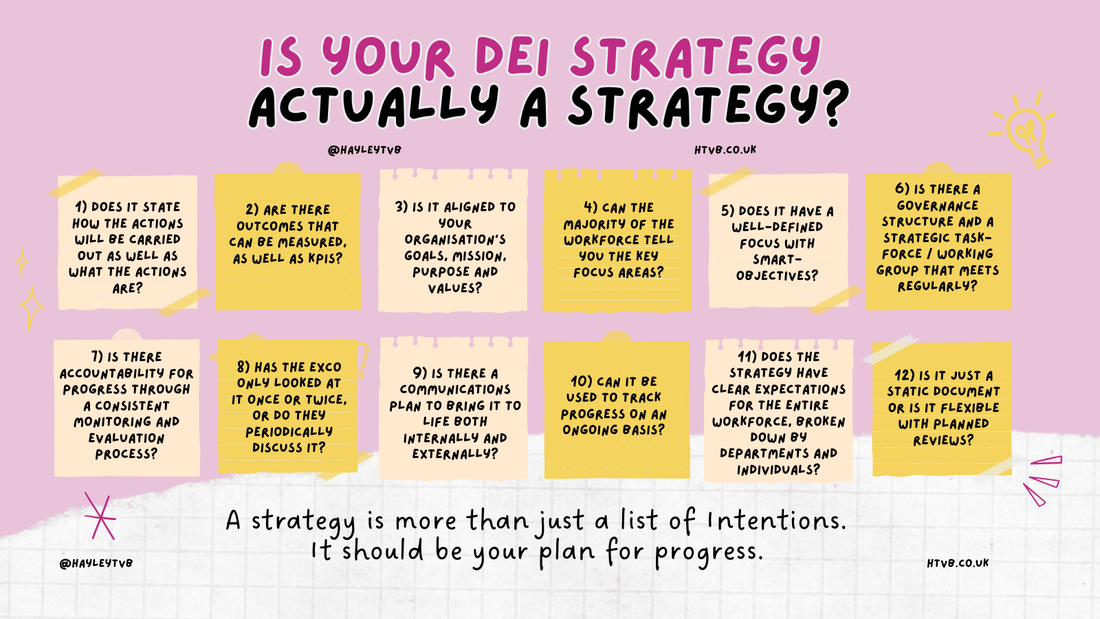

![The words “Let’s move on from these unhelpful takes about racism in sport:” and lists six commonly heard quotes in colourful speech bubbles: 1. “The athlete went out there and rose above it” 2. “If this [incident relating to another form of oppression] was racism it would be taken more seriously” 3. “The real issue is about class” 4. “It’s society’s problem” 5. “This is shocking, I can’t believe this is still happening in 2024” 6. “We are anti-racist. We have invested in a number of schemes to increase participation and promote inclusion” displayed in a colourful graphic with a pink background](/uploads/1/2/2/4/122470260/2_orig.png)
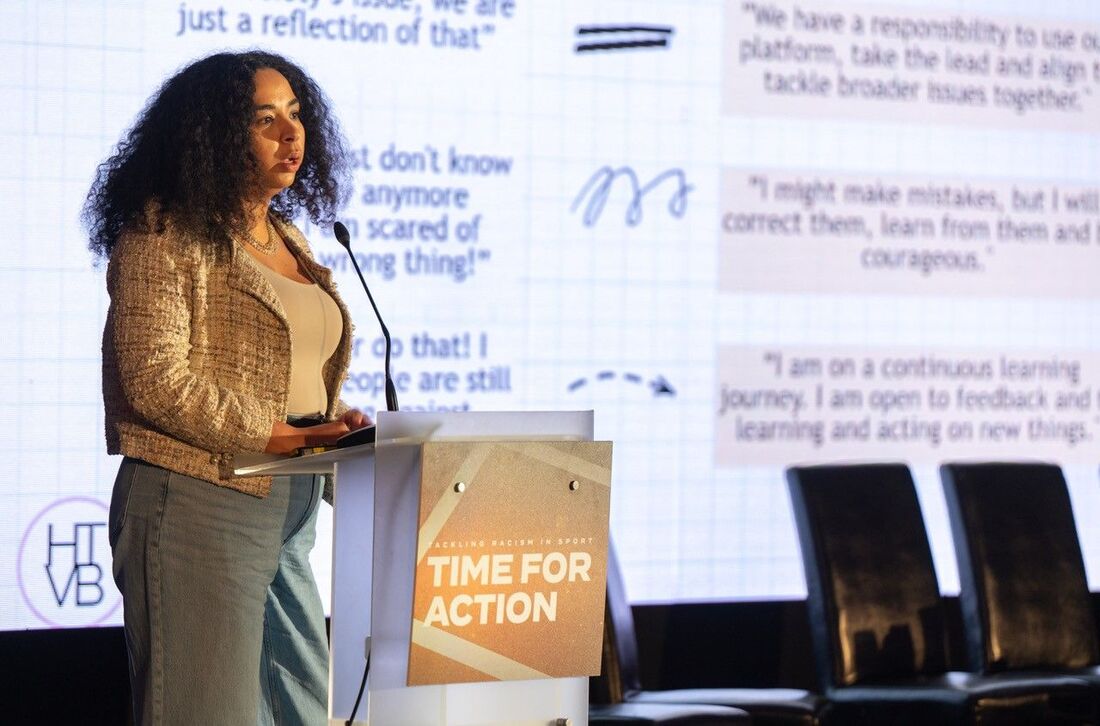
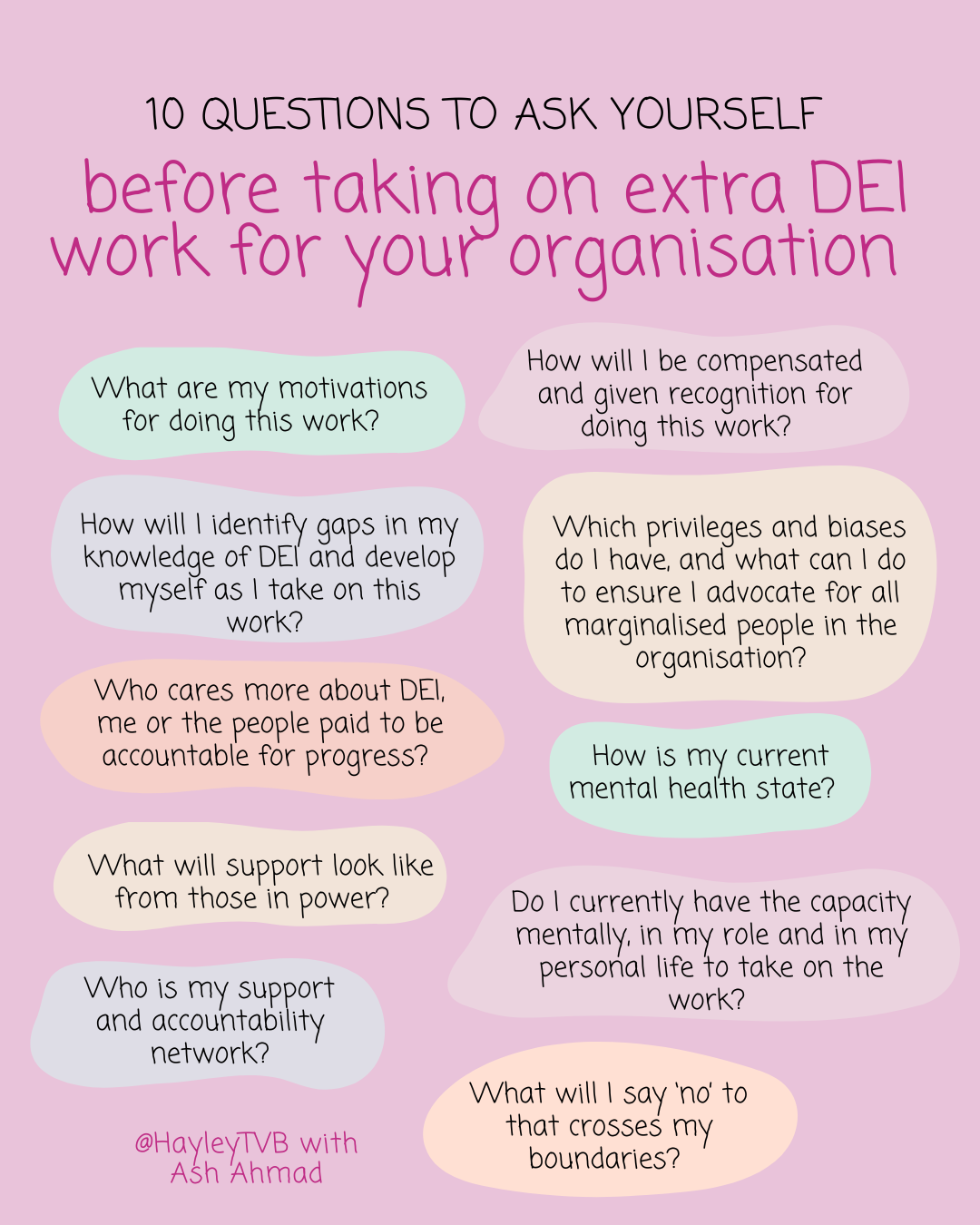
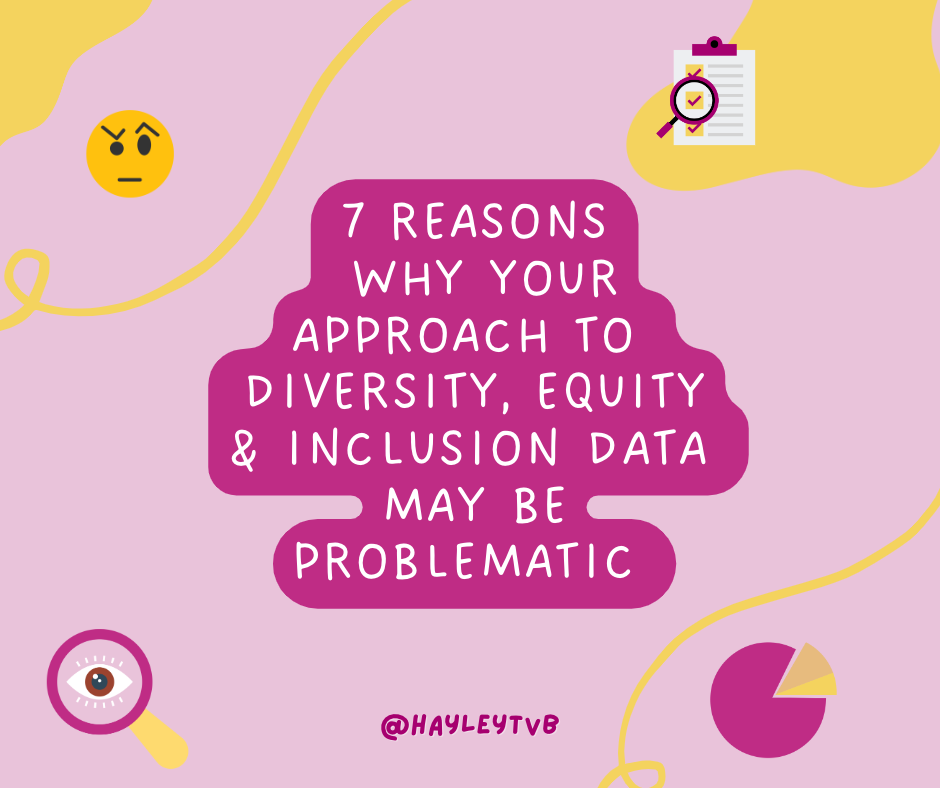
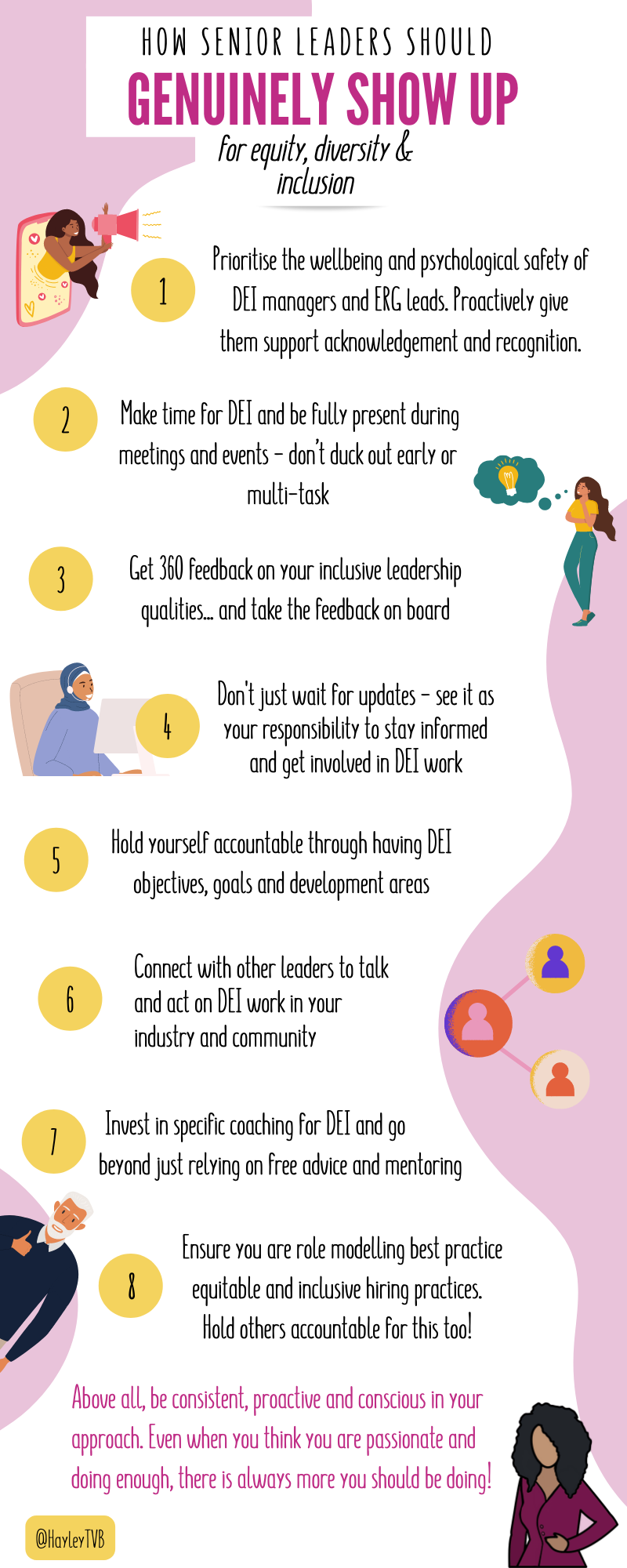
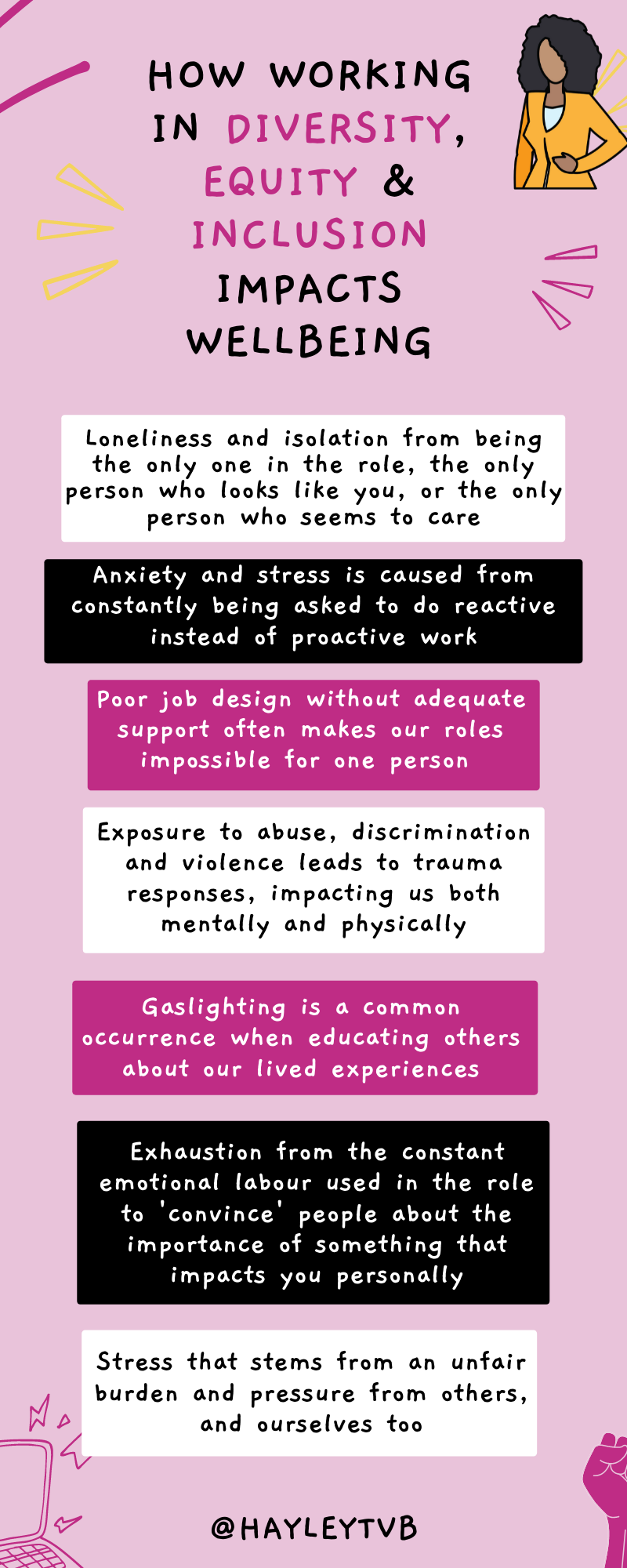
 RSS Feed
RSS Feed